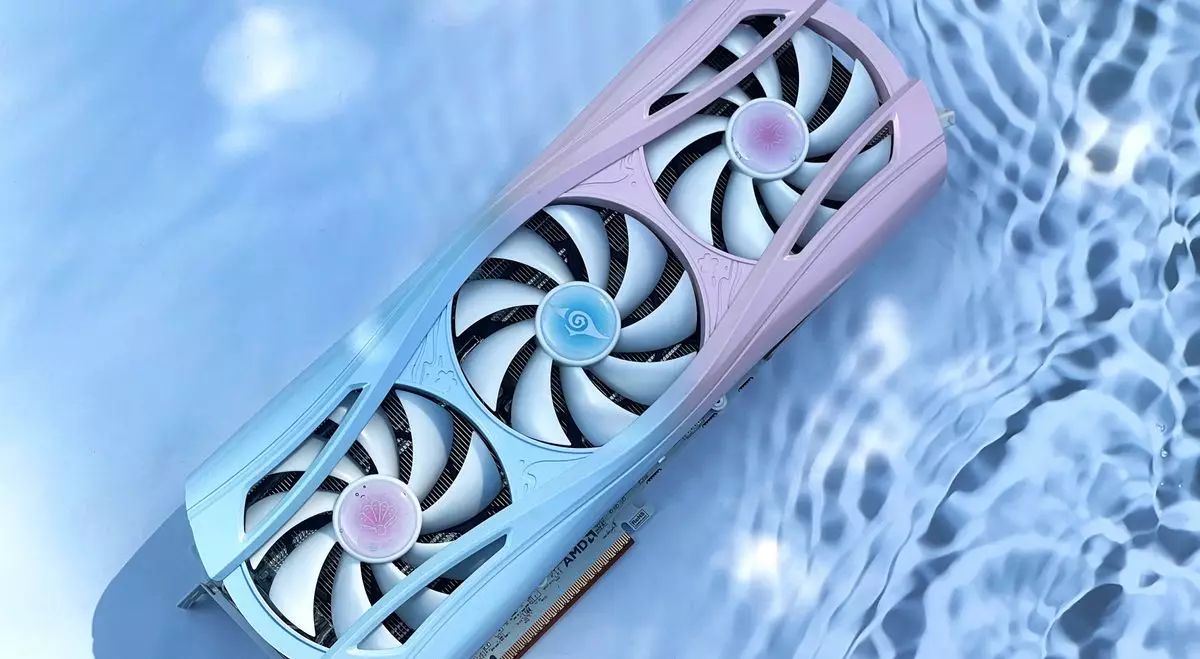The graphics card market has long been marred by fluctuations in supply and demand, leaving gamers yearning for reasonable prices and accessibility. AMD’s latest graphics cards, the Radeon RX 9070 and 9070 XT, have emerged against this backdrop, drawing attention for their advanced features and performance. Despite the excitement surrounding their launch, AMD faces the familiar challenge of ensuring availability at prices close to the manufacturer’s suggested retail price (MSRP). This struggle is emblematic of broader industry trends, the complexities of market dynamics, and consumer expectations.
It is essential to recognize the context in which these new GPUs have been released. Unlike Nvidia’s RTX 50-series, which faced an intense stock drought, AMD’s offerings, while still sold out rapidly, have had a relatively more stable supply chain. Nonetheless, those hoping to purchase these highly sought-after graphics cards have often found themselves disappointed, with prices consistently exceeding the MSRP due to high demand. According to market predictions, factors such as sustained interest and strategic restocking efforts are expected to facilitate a transition towards better availability, particularly after April.
Insights from AMD’s David McAfee
David McAfee of AMD has opened up about the company’s intentions regarding the supply chain management of their graphics cards. His focus is clear: restocking partnerships and ensuring that both retailers and manufacturers can adequately meet market demand. He emphasizes the priority of making GPUs accessible to consumers at prices they anticipate. This straightforward communication, however, does not seem to unveil revolutionary plans for systemic change within AMD’s supply chain. Instead, it reiterates standard practices, reflecting a cautious yet optimistic outlook.
Interestingly, McAfee highlights how the launch of the RX 9070 series has been a significant milestone for AMD—a fascinating admission given the competitive environment they are operating under. He reinforces the idea that the market for graphics cards, while profitable, is fraught with complexities owing to the interactions between AMD, its partnerships, and retailers. This reveals not only AMD’s operational methods but also the intrinsic limitations and dependencies of a multi-tiered distribution system.
The Complexity of the Graphics Card Market
Navigating the graphics card market requires understanding a multitude of factors that influence pricing and availability. AMD primarily supplies chips to various graphics card manufacturers, who then develop distinct board designs, occasionally targeting prices above the MSRP. This indicates a degree of reliance on third-party partners that can complicate AMD’s ability to ensure price stability in the face of soaring demand.
While it’s true that AMD relinquishes a portion of control by not fully engaging in direct sales or specific reference designs for these GPUs, is this really a strategic advantage? By allowing partners the freedom to innovate and set prices, AMD is banking on their dedication to stocking affordable versions of the RX series. However, this approach might not yield the intended results if the manufacturers opt for design features that command a premium price. Such decisions can push the average cost of AMD’s offerings beyond the reach of many consumers, resulting in missed opportunities to capture a broader audience at accessible price points.
The Unpredictable World of GPU Demand
The launch of the RX 9070 series undoubtedly created a buzz, but the primary question remains—how sustainable is this demand? With technology evolving rapidly and more gamers looking to upgrade their setups, continued consumer interest in AMD’s products is probable. Yet the underlying issue of availability may hinder the potential for bright future sales.
What happens when the demand meets the supply? Consumers expect to purchase GPUs seamlessly, as they would with any other tech product. This tipping point, where availability normalizes, could drastically alter the pricing landscape as competition ramps up. However, the market has shown that patience is woven into the fabric of GPU transactions. Having waited for years for stability in pricing and availability, many consumers are left skeptical of the assurances from manufacturers.
Looking Ahead: Hopes and Realities in the GPU Market
AMD finds itself at a crossroads; the measures they take to stabilize their production and distribution channels will either set a new standard for graphics cards or reinforce ongoing frustrations among gamers. There’s a thin line between a thriving business model and one that alienates its customer base due to inaccessible products. McAfee’s acknowledgment of market complexities is a starting point to address deeper systemic issues, but it alone cannot ease the fatigue of consumers yearning for seamless access to graphics technology.
In summation, AMD’s strategies for improving both supply and pricing seem to dwell within conventional frameworks without any clear indication of radical shifts. This cautious optimism may serve them but may also fuel concerns that the weight of consumer expectation will continue to overshadow their ability to fulfill it. As AMD continues this delicate balancing act, both gamers and industry watchers will be keenly observing the unfolding narrative of graphics card availability and pricing trends.

